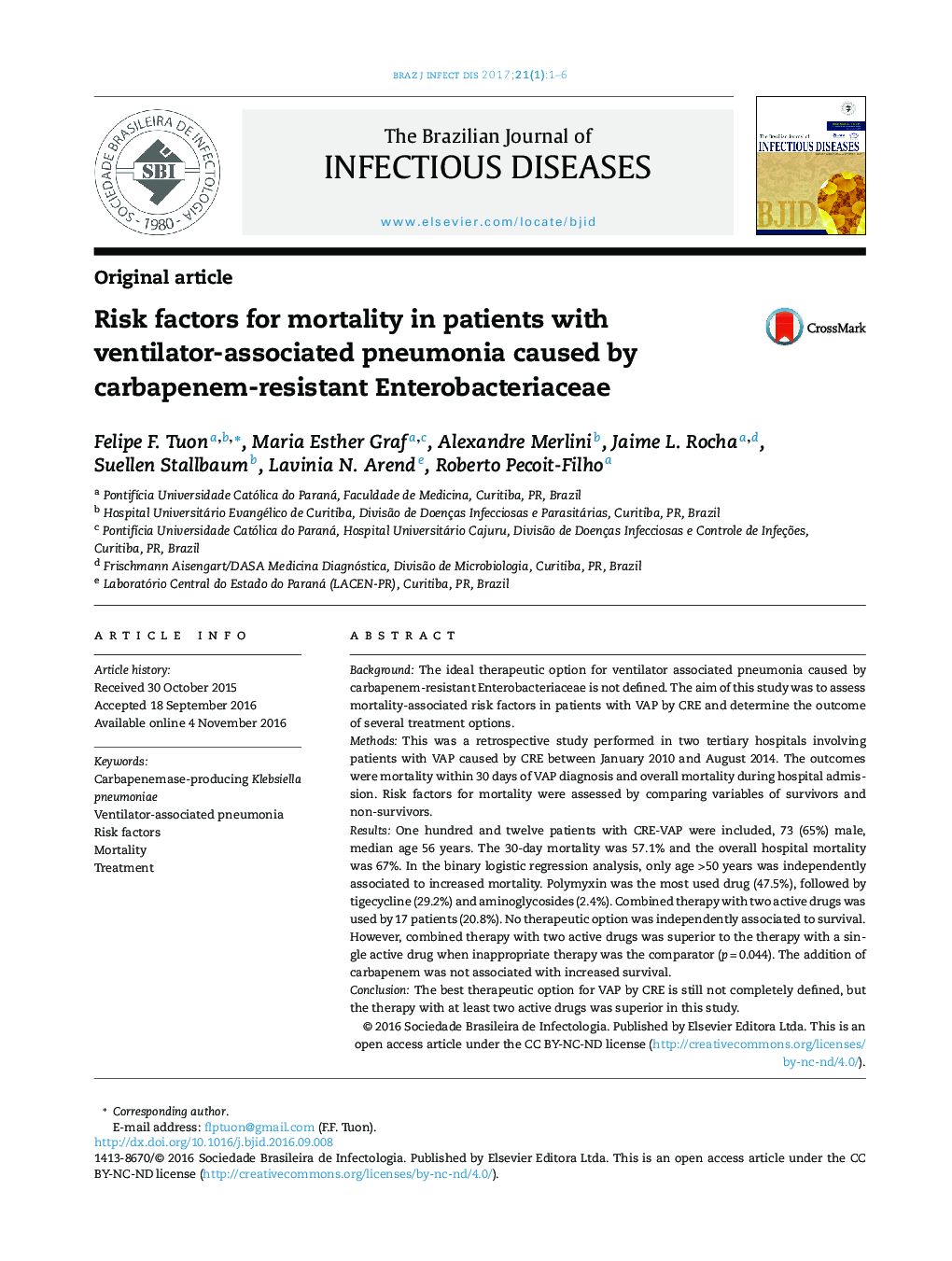| Article ID | Journal | Published Year | Pages | File Type |
|---|---|---|---|---|
| 5665567 | The Brazilian Journal of Infectious Diseases | 2017 | 6 Pages |
BackgroundThe ideal therapeutic option for ventilator associated pneumonia caused by carbapenem-resistant Enterobacteriaceae is not defined. The aim of this study was to assess mortality-associated risk factors in patients with VAP by CRE and determine the outcome of several treatment options.MethodsThis was a retrospective study performed in two tertiary hospitals involving patients with VAP caused by CRE between January 2010 and August 2014. The outcomes were mortality within 30 days of VAP diagnosis and overall mortality during hospital admission. Risk factors for mortality were assessed by comparing variables of survivors and non-survivors.ResultsOne hundred and twelve patients with CRE-VAP were included, 73 (65%) male, median age 56 years. The 30-day mortality was 57.1% and the overall hospital mortality was 67%. In the binary logistic regression analysis, only age >50 years was independently associated to increased mortality. Polymyxin was the most used drug (47.5%), followed by tigecycline (29.2%) and aminoglycosides (2.4%). Combined therapy with two active drugs was used by 17 patients (20.8%). No therapeutic option was independently associated to survival. However, combined therapy with two active drugs was superior to the therapy with a single active drug when inappropriate therapy was the comparator (p = 0.044). The addition of carbapenem was not associated with increased survival.ConclusionThe best therapeutic option for VAP by CRE is still not completely defined, but the therapy with at least two active drugs was superior in this study.
